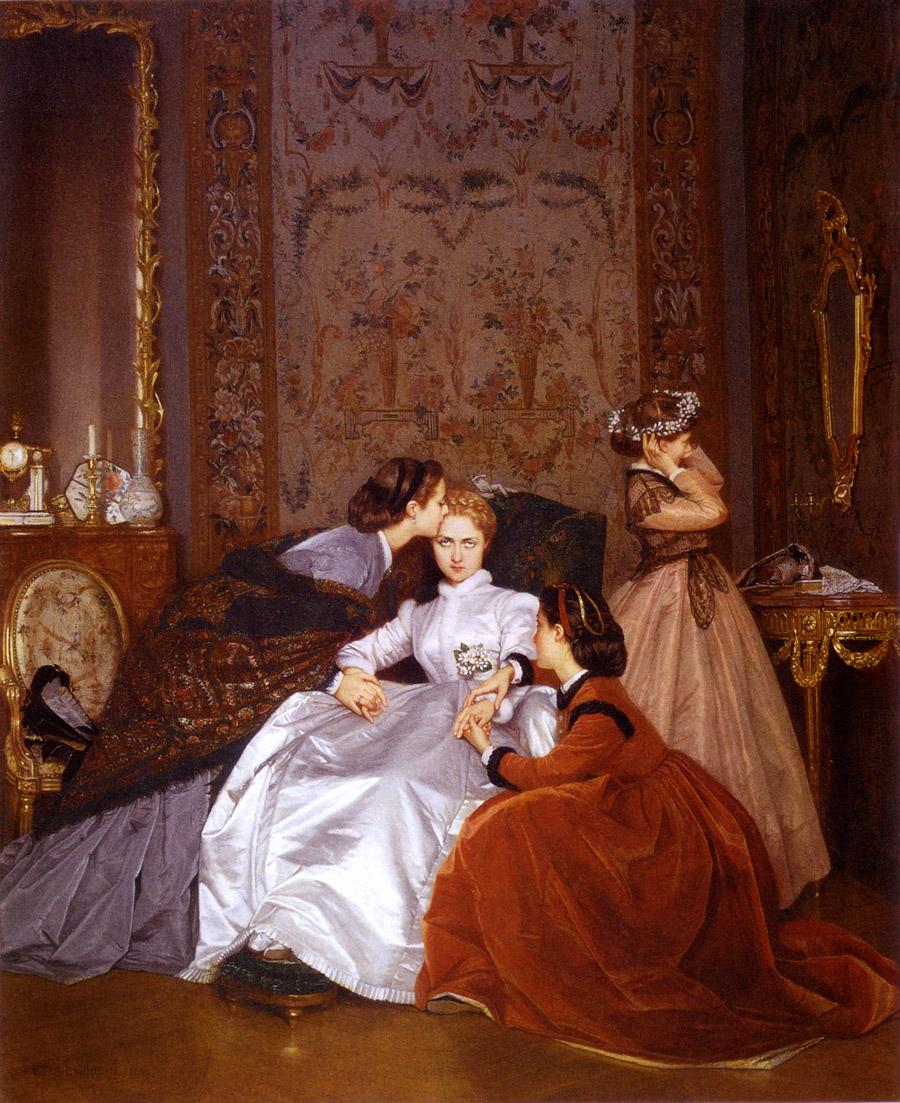Created by Kaitlynn Wolffe on Wed, 10/16/2024 - 09:07
Description:
Marriage and courtship during the Regency era deeply embedded in the societal norms and political landscapes of early 19th-century England. Both men and women navigated a complex web of expectations, where personal desires often clashed with familial and social pressures, transforming the institution of marriage into a strategic alliance laden with societal implications. In the picture above is this best depicted, in Auguste Toulmouche’s 1866 oil painting “The Reluctant Bride.” In this painting it is clear that, while her bridesmaid’s and friends get her ready, the woman in focus is visibly angry. Was this marriage not for love after all, but a political union?
For women, the pressures surrounding marriage were particularly intense. In a society that prioritized female virtue and reputation, young women were often viewed as commodities whose worth was determined by their marriage prospects. Woman also lacked any legal rights to inheritance or family wealth, known as coverture. The process of coverture “swallowed up a woman’s independent identity when she married, subsuming her legally ‘under cover’ of her husband” (Tassel 374). Because of this, it was expected that, for the family wealth to be passed down properly, that they marry well, to secure financial security or increase social status. As a result, courtship was not merely a romantic endeavor; it was a crucial social transaction. Women were expected to attract suitors, engage in flirtation, and demonstrate qualities such as grace, modesty, and domestic skill, all while adhering to strict codes of conduct. A woman’s failure to secure a suitable match could result in social ostracism or a diminished status within her community.
The politics of courtship were equally significant. Marriages were often seen as alliances between families rather than the union of individuals. Parents and guardians had a considerable say in their children's marital choices, and many matches were arranged based on social class, financial stability, and familial connections. The rise of the gentry and the new wealth from commerce also complicated the social hierarchy, as traditional families sought to maintain their status while simultaneously recognizing the value of financial prowess. This created a dynamic where love and affection could be secondary to economic and social strategy. For example, in Mansfield Park, Fanny Price’s mother married a Marine Lieutenant, which had “a direct consequence on her lifestyle” (Martynková 13). Miss Price became awfully busy, and even her daughter Fanny, as readers come to know, is consistently reminded of her lower status.
The Regency period was also a time of political unrest, with movements for reform and change. The desire for greater personal freedom and autonomy began to emerge, challenging the conventions of courtship and marriage. This atmosphere of change provided a backdrop for some women to advocate for more choice in their marital destinies, while some men began to question the traditional norms that dictated their roles as suitors and providers. Marriage in this period of time was wrought with strong political motivations and considerations.
Works Cited
Toulmouche, Auguste. “The Reluctant Bride,” 1866, oil on canvas.
Van Tassel, Emily F. “Women, Property, and Politics in Nineteenth-Century Law.” Reviews in American History, vol. 11, no. 3, 1983, pp. 374–80. JSTOR, https://doi.org/10.2307/2702468. Accessed 16 Oct. 2024.
Martynková, Hana. The Rules of Regency Society in Jane Austen’s Novels, theses.cz/id/ie1k6e/BP_Martynkova_2020.pdf. Accessed 16 Oct. 2024.
Copyright:
Associated Place(s)
Part of Group:
Artist:
- Auguste Toulmouche


